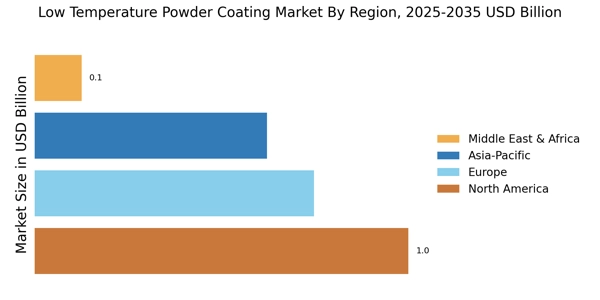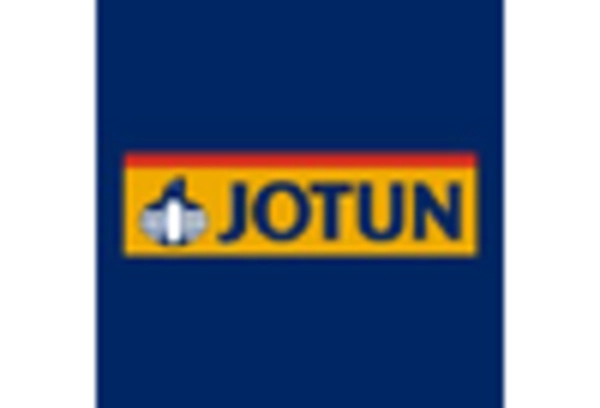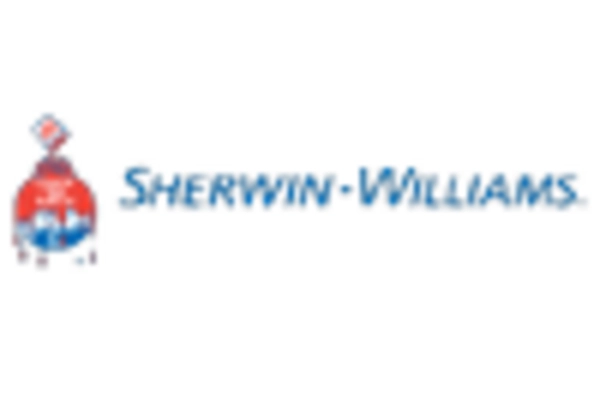Regulatory Compliance
Regulatory compliance is a critical factor influencing the Low Temperature Powder Coating Market. Governments worldwide are implementing stricter regulations regarding emissions and environmental impact, prompting manufacturers to seek compliant coating solutions. Low temperature powder coatings, which typically emit fewer VOCs and require less energy for curing, are increasingly viewed as viable alternatives to traditional coatings. This shift not only helps companies adhere to regulations but also enhances their market competitiveness. As regulatory frameworks continue to evolve, the demand for low temperature powder coatings is expected to grow, positioning the Low Temperature Powder Coating Market favorably in the face of changing compliance landscapes.
Growing Automotive Sector
The automotive sector is a significant driver for the Low Temperature Powder Coating Market, as manufacturers seek to enhance vehicle aesthetics while ensuring durability. The shift towards lightweight materials in automotive design has increased the demand for coatings that can be applied at lower temperatures, thus preserving the integrity of these materials. According to industry reports, the automotive coatings segment is projected to witness substantial growth, with low temperature powder coatings being favored for their excellent adhesion and resistance to chipping and scratching. This trend suggests a robust future for the Low Temperature Powder Coating Market, particularly as automotive manufacturers prioritize both performance and sustainability.
Technological Innovations
Technological advancements play a crucial role in shaping the Low Temperature Powder Coating Market. Innovations in formulation chemistry have led to the development of new powder coatings that can cure at lower temperatures without compromising performance. This is particularly beneficial for heat-sensitive substrates, such as plastics and composites, which are increasingly used in various applications. The introduction of advanced application techniques, such as electrostatic spray and fluidized bed coating, enhances the efficiency and quality of the coating process. As these technologies continue to evolve, they are expected to drive market growth by expanding the range of applications for low temperature powder coatings.
Sustainability Initiatives
The increasing emphasis on sustainability within the Low Temperature Powder Coating Market is driving demand for eco-friendly coating solutions. Manufacturers are increasingly adopting low temperature powder coatings due to their reduced energy consumption during application, which aligns with global efforts to minimize carbon footprints. These coatings often contain fewer volatile organic compounds (VOCs), making them a safer choice for both the environment and human health. As industries strive to meet stringent environmental regulations, the adoption of low temperature powder coatings is likely to rise. This trend is further supported by consumer preferences shifting towards sustainable products, indicating a potential growth trajectory for the Low Temperature Powder Coating Market.
Consumer Electronics Demand
The rising demand for consumer electronics is significantly influencing the Low Temperature Powder Coating Market. As electronic devices become more compact and lightweight, manufacturers are increasingly utilizing low temperature powder coatings to protect sensitive components without risking damage from high curing temperatures. These coatings provide excellent finish quality and durability, which are essential in the competitive consumer electronics market. The trend towards customization and aesthetic appeal in electronic devices further drives the need for innovative coating solutions. This growing sector indicates a promising outlook for the Low Temperature Powder Coating Market, as it adapts to meet the specific needs of electronics manufacturers.


















Leave a Comment